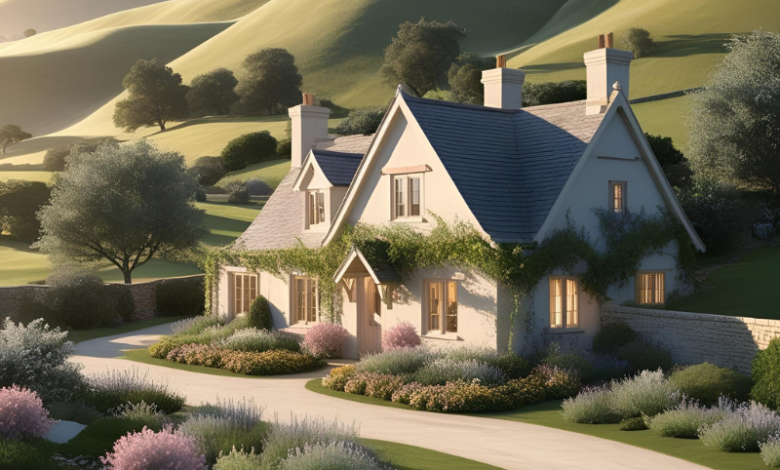The Future of Landscape Design: AI and 3D Rendering Integration

The landscape design industry is undergoing a profound transformation, driven by cutting-edge technologies like artificial intelligence (AI) and 3D rendering. These advancements are redefining how designers conceptualize, visualize, and execute outdoor spaces, from residential gardens to large-scale urban landscapes.
AI-powered tools streamline design processes by generating optimized layouts, predicting environmental impacts, and automating complex tasks. Meanwhile, 3D rendering allows clients and stakeholders to experience lifelike visualizations before construction begins, reducing errors and enhancing collaboration.
As AI and 3D rendering continue to evolve, they promise to make landscape design more efficient, sustainable, and visually compelling than ever before. In this blog, we’ll explore how these technologies are shaping the future of landscape architecture.
The Current Landscape Design Process
The current landscape design process blends creativity, technology, and sustainability to create beautiful outdoor spaces. Whether designing a home garden, a commercial space, or a public park, the process follows a structured approach to ensure functionality and aesthetics.
It starts with site analysis, where designers assess the land’s conditions, including soil quality, climate, and drainage. Understanding these factors helps in making informed design decisions. Next is concept development, where designers create initial sketches based on client needs and the site’s potential. This phase includes selecting plant types, pathways, seating areas, and water features.
Once the concept is approved, designers move to detailed planning. This involves creating digital models using CAD software or 3D renderings to give a realistic view of the final design. Sustainability is also a key focus today, with eco-friendly materials, native plants, and water-efficient irrigation systems being integrated into plans.
After planning, the construction phase begins. Skilled workers execute the design, ensuring everything is built as planned. Proper coordination between designers, contractors, and suppliers is essential for a smooth process.
Finally, the project moves to maintenance and care. Regular upkeep, such as watering, pruning, and pest control, ensures the landscape remains vibrant and healthy over time.
Modern landscape design is a mix of art and science, creating spaces that are both visually appealing and environmentally responsible. With advancements in technology and a growing focus on sustainability, landscape design continues to evolve, offering innovative solutions for outdoor spaces.
The Role of AI in Landscape Design
Artificial Intelligence (AI) is changing how landscapes are designed, making the process faster, smarter, and more efficient. Traditionally, landscape architects spend a lot of time planning layouts, selecting plants, and ensuring environmental sustainability. With AI, many of these tasks can now be automated, improving accuracy and saving time.
One of the biggest advantages of AI in landscape design is its ability to analyze vast amounts of data. AI-powered software can study climate conditions, soil quality, and water availability to recommend the best plants for a specific location. This helps create landscapes that are both beautiful and sustainable.
AI also enhances creativity by generating multiple design ideas. Designers can use AI tools to explore different styles, layouts, and materials before making final decisions. These tools can even predict how a landscape will look years later, helping designers plan for future growth.
Sustainability is another key benefit of AI in landscape design. AI can suggest eco-friendly solutions, such as water-efficient irrigation systems, green roofs, and smart lighting. This reduces environmental impact while keeping landscapes vibrant and healthy.
Also, AI-powered drones and robots are being used for tasks like surveying land, planting trees, and maintaining gardens. This makes large-scale projects more manageable and cost-effective.
Overall, AI is revolutionizing landscape design by making it more efficient, sustainable, and innovative. As technology continues to improve, AI will play an even bigger role in creating green spaces that benefit both people and the environment.
The Power of 3D Rendering in Landscape Visualization
3D rendering has transformed the way we design and visualize landscapes. It allows designers, architects, and clients to see a realistic digital version of a landscape before any physical work begins. This technology helps in planning gardens, parks, urban spaces, and outdoor areas with accuracy and creativity.
One of the biggest advantages of 3D rendering is that it brings ideas to life. Traditional sketches and 2D plans can be hard to understand, but 3D visuals give a clear and immersive view. They show details like plants, walkways, lighting, and water features in a lifelike manner. This helps clients and stakeholders make informed decisions and suggest changes before construction starts, saving time and money.
Another benefit is the ability to experiment with different designs. With 3D rendering, landscape designers can quickly test various layouts, materials, and color schemes. They can also simulate real-world conditions like sunlight, shadows, and seasonal changes to see how the space will look throughout the year.
3D rendering also improves communication between designers and clients. Since the visuals are highly detailed and realistic, everyone involved in the project can have a clear understanding of the final outcome. This reduces misunderstandings and ensures the project meets expectations.
Benefits of AI and 3D Rendering in Landscape Design
AI and 3D rendering are transforming landscape design by making the process faster, more accurate, and visually impressive. These technologies help designers create realistic outdoor spaces while saving time and effort.
Better Visualization
With 3D rendering, landscape designers can create lifelike images of outdoor spaces before any construction begins. Clients can see how their gardens, patios, or parks will look with different plants, lighting, and materials. This helps them make better decisions and avoid costly changes later.
Time and Cost Savings
AI-powered tools can analyze site conditions, suggest the best plant placements, and even predict growth patterns over time. This reduces manual work and speeds up the design process. 3D rendering also minimizes errors, reducing the need for expensive revisions.
Eco-Friendly Planning
AI can suggest sustainable materials and water-efficient plant arrangements. It can also simulate environmental factors like sunlight and rainfall, ensuring that the landscape design is eco-friendly and long-lasting.
Customization and Creativity
AI helps designers experiment with different styles and layouts quickly. Clients can explore various design options and personalize their spaces with ease. 3D rendering brings these ideas to life with realistic textures, shadows, and lighting effects.
Improved Collaboration
With AI and 3D rendering, landscape architects, clients, and contractors can work together more effectively. Clear visual models ensure that everyone understands the plan, leading to smoother communication and better results.
In short, AI and 3D rendering make landscape design more efficient, cost-effective, and visually stunning.
Final Note
The integration of AI and 3D rendering is revolutionizing landscape design, making the process more efficient, sustainable, and visually engaging. AI-powered tools enhance decision-making by analyzing environmental data, automating repetitive tasks, and offering optimized design solutions.
Meanwhile, 3D rendering provides realistic visualizations that help clients and designers fine-tune projects before implementation, reducing errors and costs. These technologies not only streamline workflows but also contribute to eco-friendly and highly customized outdoor spaces.
As AI and 3D rendering continue to advance, they will play an even greater role in shaping the future of landscape architecture, offering innovative, cost-effective, and aesthetically stunning solutions for outdoor environments.






